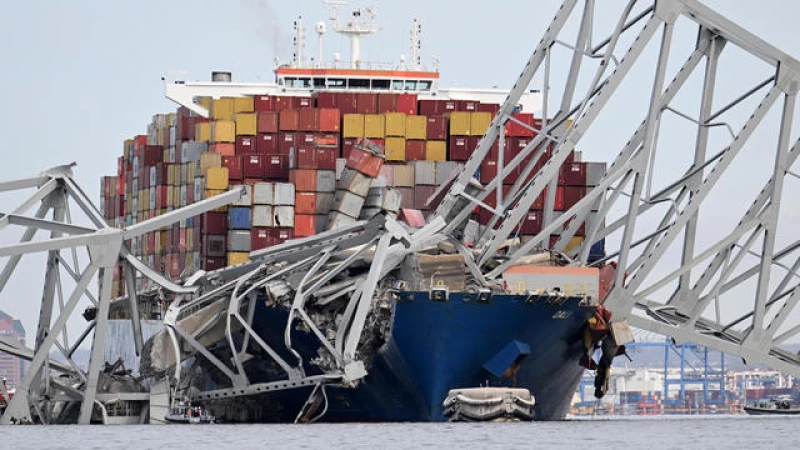Baltimore's Francis Scott Key Bridge collapsed early Tuesday morning after one of its columns was hit by a large container ship. Video of the bridge shows it buckle and crash into the river below after the Dali, a massive 948-foot cargo ship, hits it, sending vehicles and people into the river below. Here's what we know about the condition of the bridge and how this sort of collapse could happen.
An active search and rescue mission in the Patapsco River below is ongoing and the National Transportation Safety Board is investigating what happened.
During its latest federal inspection, the Key Bridge scored a six out of nine, which is considered fair, a condition it had been labeled since 2008, according to CBS Baltimore.
The bridge passed inspection in May 2022, but there was concern with one of its columns. The reinforced concrete column – like the one hit by the ship – was downgraded from a health index, or condition rating, of 77.8 to 65.9.
According to Ben Schafer, a professor of civil and systems engineering at Johns Hopkins University, most bridges in the U.S. are rated as "fair," which is concerning for society. However, Schafer believes that the recent collapse of the Key Bridge was likely due to the impact of a massive ship, rather than the bridge's condition.
Schafer stated, "Like others, I've watched the video a bunch of times and have gone frame by frame and worked up a few different hypotheses in my mind, but I see little evidence for anything other than: the boat strike took a bridge with two supports and took away one of them and then it fell in the water. I mean, doesn't seem to be super more complicated than that."
He explained that many bridges, whether suspension or arched, require two supports under the section that spans over water. "This is the minimum number to cross over," Schafer noted.
Schafer also pointed out that the container ship involved in the incident was as wide as it was tall, making it similar in scale to the bridge. "So the mass associated with that container ship creates an amount of energy that a small concrete pier isn't going to sustain. That's an accident that we can't allow to happen and expect the bridges to stay up," he concluded.
In the late 1800s, Schafer mentioned that the Quebec Bridge, with a design similar to Baltimore's Key Bridge, collapsed. This event provided engineers with valuable lessons about truss bridges. However, by the 1970s, when the Key Bridge was constructed, the modern design used was deemed sufficient.
Schafer pointed out that while there is a lesson to be learned from this incident, it may not necessarily involve changes to the bridge's design to prevent such accidents. Factors such as the management of shipping traffic and the size of container ships, which have likely increased since the bridge's construction in the 1970s, should be taken into account when assessing the risk of these accidents.
Robert Sumwalt, the former chairman of the National Transportation Safety Board, shared with CBS News that the video of the accident offers some clues about the potential causes. He noted that the flashing lights on the ship indicated an electrical power failure, which was confirmed by authorities as the ship did lose power before the collision.
Additionally, Sumwalt mentioned that the sight of black smoke emanating from the ship suggests that the "ship's crew is trying to increase the RPMs across the propeller to enhance its steering capability."
The Key Bridge, a four-lane structure stretching 1.6 miles, served as a crucial route for around 31,000 commuters daily, as reported by CBS News Baltimore. With only two other tunnels spanning the Patapsco River, the absence of the bridge will severely limit access to the area, according to Sumwalt.
During the time of the incident, a construction team was patching up potholes on the bridge. While two workers have been successfully rescued from the water, Maryland Department of Transportation Secretary Paul Wiedefeld revealed in a press briefing that six individuals are still missing and unaccounted for.







